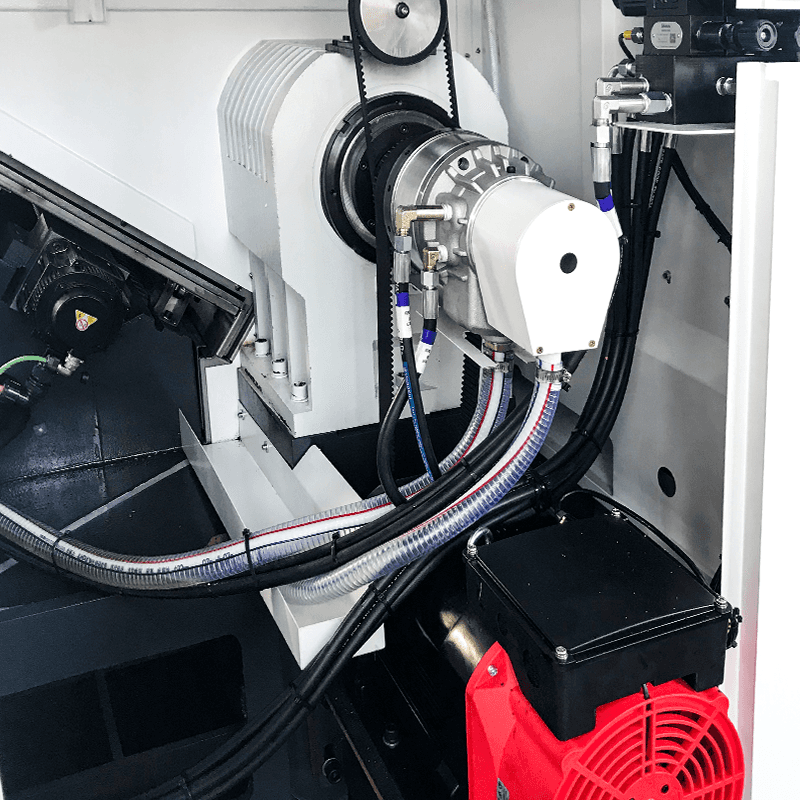Technical Characteristics: It can cut all kinds of turning surfaces by bicycle, such as conical surf...
See Details
The evolution of manufacturing technology has been profoundly influenced by the rise of the CNC milling machine factory. As manufacturers deeply involved in producing these essential tools, we recognize the transformative impact they have had on precision machining and industrial productivity. The development of the CNC milling machine reflects a journey from manual operations to highly automated processes that deliver consistent quality and efficiency.

Initially, milling was a manual and labor-intensive task requiring skilled operators to control the cutting tools. Early machines lacked the precision and repeatability demanded by modern industries. The introduction of computer numerical control (CNC) revolutionized this process. The CNC milling machine combined traditional milling mechanics with computerized automation, enabling operators to program intricate tool paths for complex parts with minimal human intervention.
From a manufacturing standpoint, the transition to the CNC milling machine marked a significant advancement. By integrating computer control, these machines could achieve tighter tolerances and more complex geometries than ever before. This precision is especially important in sectors such as aerospace, automotive, and medical device manufacturing, where small deviations can major functional issues.
Over time, the design of the CNC milling machine has evolved to include multi-axis capabilities. Early models were limited to three axes—X, Y, and Z—allowing basic movement of the cutting tool and workpiece. Today's machines often include five or more axes, providing enhanced flexibility and the ability to perform intricate machining operations without repositioning the workpiece. This evolution has allowed manufacturers to reduce setup time and increase throughput.
Material compatibility has also expanded throughout the development of the CNC milling machine. Initially designed for machining metals such as steel and aluminum, modern machines now handle a broad range of materials including composites, plastics, and titanium alloys. Our manufacturing processes incorporate robust spindle designs and advanced tooling systems to meet these diverse needs, ensuring that each CNC milling machine delivers consistent performance across applications.
Automation and software integration have played a crucial role in the CNC milling machine's development. Computer-aided design (CAD) and computer-aided manufacturing (CAM) software allow seamless translation from digital models to machine instructions. As manufacturers, we ensure that our machines are compatible with the latest software platforms, enabling users to optimize tool paths, reduce cycle times, and simulate machining operations before actual production.
Another key advancement in the CNC milling machine is the incorporation of sensor technology and real-time monitoring. Modern machines can detect tool wear, vibration, and thermal changes, allowing for predictive maintenance and reducing unexpected downtime. Our manufacturing standards include the integration of such smart features to help users maintain performance and extend machine lifespan.
Safety and ergonomics have also been important considerations in the evolution of the CNC milling machine. Early machines often required operators to be in close proximity to moving parts. Today's models include protective enclosures, automatic tool changers, and user-friendly interfaces that minimize risk and improve operator comfort. Our design philosophy prioritizes these elements to create machines that are both efficient and safe.
Energy efficiency is another aspect that has influenced recent developments. The CNC milling machine has benefited from innovations such as variable frequency drives, energy-saving motors, and improved coolant systems. As manufacturers, we are committed to reducing the environmental impact of our machines by incorporating these technologies into our product lines.
Our team of digital and business experts will guide you to the right direction.
Let's Talk